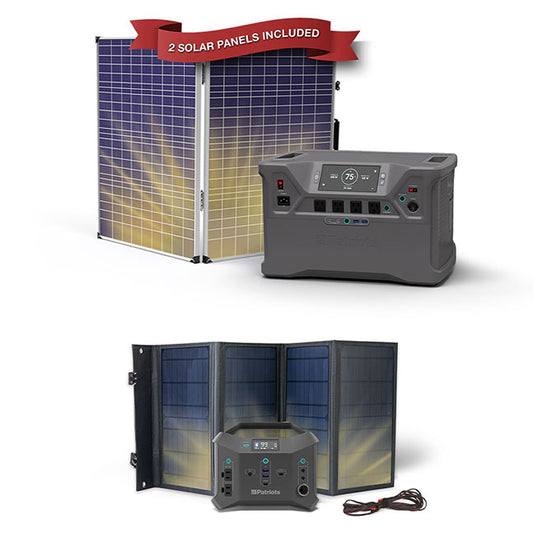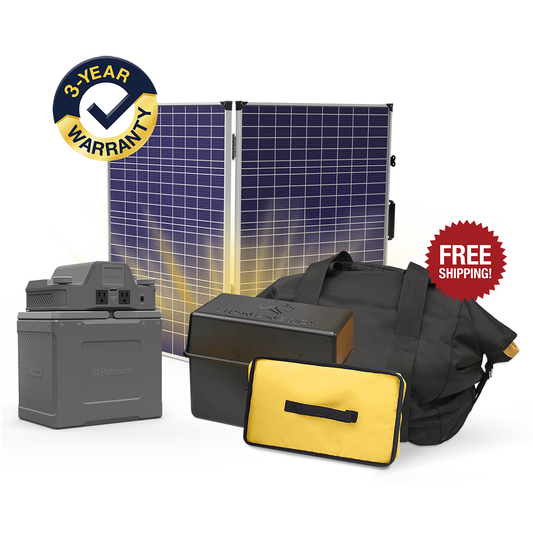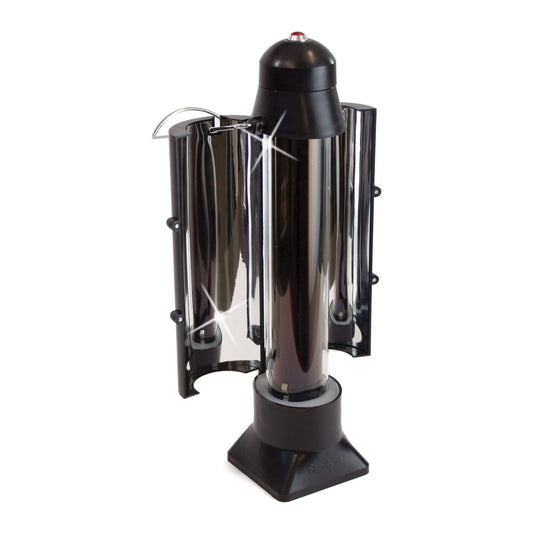
Earthquake

"It’s not if it’s going to happen to you, but when.”
Ask anyone who lives near Salt Lake City, Utah. The city was awakened by a 5.7 magnitude earthquake on the morning of March 18th.
Much like the COVID-19 Global Pandemic, this was something no one saw coming – but the Earth had other ideas.
The Salt Lake Valley hadn’t had a sizable shake since 1962 and last week’s quake offered a rare opportunity to better map a virtually unknown fault line.
It hasn’t been easy going for my friends at 4Patriots lately. A horrific tornado in Nashville with a destructive path of over 50 miles, the Coronavirus and now an earthquake at one of their major fulfillment centers.
But there is no better company ready to deal with such disasters and continue to deliver the finest survival equipment on the planet!
What to do when it hits
The myths are rampant about what your immediate actions should be when an earthquake hits:
- Run outside
- Get in a door frame
- Get against a wall
Guess what? They’re ALL wrong.
If you find yourself outside, then try to get to a clearing. Risk of injury or death from getting hit by falling debris is greater than being crushed. Remember that safe distance away from a building is at least 1½ times the height of the building. Ideally, if you can get to a large parking lot or open park, you should be safe. Pay close attention not to stand under/near trees.
In addition to falling debris, be aware of your surroundings, and be wary of the chance of a sinkhole forming.
If you are in a vehicle, stop as soon as possible but stay in the vehicle. Again, try to stay clear of buildings, overpasses, highway on-off ramps and utility poles.
If you are in a garage or multi-level parking facility, get out of the vehicle immediately and crouch next to it. The roof of the vehicle won’t be able to withstand the weight of the collapsing concrete.
If you are inside – stay inside. It is counterintuitive to remain in a building that may collapse on top of you during an earthquake. But again, the risk of injury or death from falling glass and debris is much greater if you try to exit once the tremor has begun. There are two methods for what to do when inside a structure during an earthquake.
- DROP, COVER, AND HOLD ON. Find a sturdy table or piece of furniture and get under it. Cover your head with your arms and hold on. This is recommended for more developed countries because of improved construction/safety requirements of structures.
But remember: If man made it, Mother Nature can destroy it in a heartbeat.
- TRIANGLE OF LIFE. The alternate method is to get next to a sturdy piece of furniture so that if a wall falls, it will create a crawl or VOID SPACE in which you can survive.
Stay put until the shaking has stopped. This will rarely last longer than a minute, but it may feel like an eternity.
I’ll have to admit that when I was in college in San Diego, I experienced my first of several earthquakes. And I did what any earthquake rookie would do: I, ran outside. So I’m talking to my neighbor for a couple of minutes, reflecting on the experience, before I realize I’m buck naked. Let’s just say that situational awareness ran a little thin in the college years. She didn’t seem to mind.
BURIED
Imagine this: You have survived the quake… but are buried in rubble.
- Try to cover your nose and mouth with a cloth of some type. There will be a ton of dust and particles, and you want to protect your airway.
- Call out to let someone know you are there, but don’t waste too much time or energy doing this.
- If you can move, look for light and SLOWLY crawl toward it. As you are crawling, make sure you only move items in front of you that are non-weight bearing or easily moved. If you attempt to move a weight-bearing item like a 2x4, it may cause the small area you are in to collapse.
- If you can’t move, again don’t waste too much of your energy yelling. The best thing to do is find something you can tap or bang on. The vibrations from this will travel much farther than your voice. Continue doing so until help arrives. “If trapped – tap.”
What next?
If a major earthquake strikes, it could be 3-5 days before you see any help. First responders are going to be totally overwhelmed and it will be up to you to do what you can to help out.
Step up!
I have to continuously remind myself when I see the general lack of courage in these situations that I have spent most of my life surrounded by excellence. I have been spoiled by a high standard that is so rare. By a group of guys I trust with my life. The type of people who race into danger. That said, you don’t have to be a SEAL to have the courage to do the right thing and help those in need.
You may be safe, but there will be people out there fighting for their lives. The clock is ticking and you have a duty to aid. Gather as many people as you can. This is a clear-cut case of strength in numbers and your mission is to save lives. Organize the group and tackle one challenge at a time. Don’t forget to do a continuous scene size-up. You are operating in a very hazardous and constantly changing environment.
Situational awareness is paramount - DON’T ADD TO THE FATALITIES!
Wear sturdy, closed-toed shoes to protect your feet from broken glass. If you have a helmet, put it on. It may seem stupid, but it will further protect you from fallen rubble, and other hazards.
One of the first things you should do is turn off the gas and de-energize the electricity. This will reduce the risk of a fire, which is a major problem following most earthquakes. You should be able to do both on the outside of your home.
Search – Going in
You should never attempt to re-enter a building after an earthquake unless a structural engineer approves it as safe to do so.
Remember: Life over personal property.
Still, if you strongly believe someone is buried, then you have to try to help.
- Ensure the gas and power have been secured (turned off).
- Never go in with less than a pair of rescuers.
- Establish a search pattern – start right and go counter-clockwise. If you have multiple search teams, have each start opposite so as to “meet in the middle.”
- Use caution while moving through the structure, remembering NOT to move any weight-bearing material. Watch your step… you could go right through the floor.
- When searching rooms, understand that you have 6 sides. The 4 walls, floor and ceiling.
- Be thorough! Do it right the first time. Someone could be wedged under a very small space.
Marking doors
A very important aspect of searches is door marking. This can be done with spray paint, magic markers, chalk, Crayon or even a bottle of mustard.
- Before entering a room or building, make one diagonal line across the door. This will let anyone know that someone is inside searching.
- If you don’t find anyone inside, place another diagonal line on the door to form an “X”
- At the top of the “X,” write the time and date. At the bottom of the “X,” place a “0”. This will let everyone know that the house has been searched and there is “0” – no one inside. They can move on to the next search and save valuable time.
Found someone – Extricating
More than likely you will find someone who is buried under quite a lot of weight. Much more weight than a couple of people will be able to move. There are two things you can do to try to get them out.
- Lever – use a long 2x4 or 4x4 and place it under the rubble, then put another object under the lever a few feet back from the end. This will be your fulcrum. The longer the lever, the more weight it will lift.
The second technique you can use is what Search and Rescue call cribbing and shoring.
- This works best with a car jack. Place the jack on top of several pieces of wood to distribute the weight at the base.
- Place a similar piece of wood between the top of the jack and the object to be lifted.
- Slowly start jacking up the object to a height of about 4”.
- Place pieces of wood that form a box “cribbing” under the object you are lifting. This will keep it from dropping back down and thus “shore” it up.
- Then continue lifting the object another 4” and repeat the process until the object is high enough to pull the victim out.
Post-quake
Don’t think that the danger is over because the earthquake stopped. Aftershocks have been known to continue for days following the initial earthquake, some of which are just as strong as the first tremor. The building that was initially damaged may collapse from an aftershock.
If you are on the move, remember that the landscape you may be used to is a very different environment post-quake with dangers you may not be able to see.
- Avoid entering structures without approval
- Avoid bridges and on-ramps
- Watch out for downed power lines
There may be several water main breaks, so remember this last tip: there are up to 50 gallons of drinkable water in your hot water heater.
BE A SURVIVOR, NOT A STATISTIC!
Cade Courtley
Former Navy SEAL / 4Patriots Contributor
Featured Products
- Regular price
- $699.95
- Regular price
-
- Sale price
- $699.95
- Unit price
- per
- Regular price
- $2,999.95
- Regular price
-
- Sale price
- $2,999.95
- Unit price
- per
- Regular price
- From $29.95
- Regular price
-
- Sale price
- From $29.95
- Unit price
- per
- Regular price
- $3,499.95
- Regular price
-
- Sale price
- $3,499.95
- Unit price
- per
- Regular price
- From $29.95
- Regular price
-
- Sale price
- From $29.95
- Unit price
- per
- Regular price
- $2,499.95
- Regular price
-
- Sale price
- $2,499.95
- Unit price
- per
- Regular price
- $499.95
- Regular price
-
- Sale price
- $499.95
- Unit price
- per
- Regular price
- $999.95
- Regular price
-
- Sale price
- $999.95
- Unit price
- per
- Regular price
- From $29.95
- Regular price
-
- Sale price
- From $29.95
- Unit price
- per
- Regular price
- $2,999.95
- Regular price
-
- Sale price
- $2,999.95
- Unit price
- per
- Regular price
- From $2,796.95
- Regular price
-
$8,390.95 - Sale price
- From $2,796.95
- Unit price
- per
- Regular price
- $4,999.95
- Regular price
-
- Sale price
- $4,999.95
- Unit price
- per
- Regular price
- From $129.95
- Regular price
-
$259.95 - Sale price
- From $129.95
- Unit price
- per
- Regular price
- $847.95
- Regular price
-
$897.95 - Sale price
- $847.95
- Unit price
- per
- Regular price
- $1,999.95
- Regular price
-
- Sale price
- $1,999.95
- Unit price
- per
- Regular price
- $279.95
- Regular price
-
- Sale price
- $279.95
- Unit price
- per
- Regular price
- From $69.95
- Regular price
-
- Sale price
- From $69.95
- Unit price
- per
- Regular price
- $29.95
- Regular price
-
- Sale price
- $29.95
- Unit price
- per
- Regular price
- $849.95
- Regular price
-
- Sale price
- $849.95
- Unit price
- per
- Regular price
- $249.95
- Regular price
-
- Sale price
- $249.95
- Unit price
- per
- Regular price
- $199.95
- Regular price
-
- Sale price
- $199.95
- Unit price
- per
- Regular price
- $129.95
- Regular price
-
- Sale price
- $129.95
- Unit price
- per
- Regular price
- $114.95
- Regular price
-
- Sale price
- $114.95
- Unit price
- per
- Regular price
- $69.90
- Regular price
-
- Sale price
- $69.90
- Unit price
- per
- Regular price
- $19.95
- Regular price
-
- Sale price
- $19.95
- Unit price
- per
























